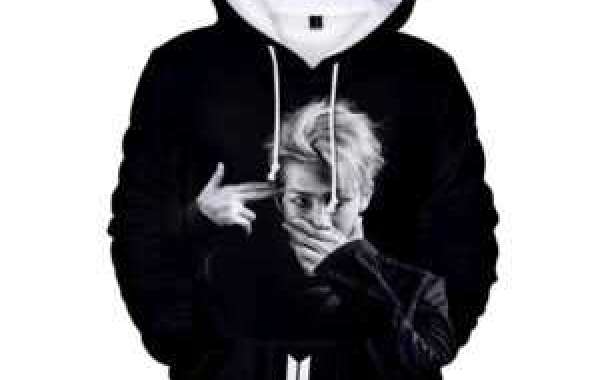A laser removal device is a highly effective tool used in various skin treatments, such as hair removal, tattoo removal, and skin resurfacing. Understanding how this device works involves a deep dive into the principles of laser technology, skin anatomy, and the interaction between the light emitted by the laser and the tissues of the skin. While laser removal devices can be used for a variety of purposes, the underlying principles governing their action remain consistent across different applications.
The Basics of Laser Technology
The word "laser" stands for Light Amplification by Stimulated Emission of Radiation. This process involves the emission of a concentrated beam of light that is highly coherent and monochromatic, meaning it has a specific wavelength and travels in a focused direction. In the context of skin treatments, the laser light is directed at targeted areas of the skin where specific problems, such as unwanted hair, tattoos, or pigmentation issues, need to be addressed.
Lasers used in medical treatments typically come in various types, with each laser being designed to treat specific conditions. The wavelength of the laser determines its interaction with different tissues in the skin. When a laser removal device is used, it emits light that is absorbed by pigments or other targeted elements within the skin, leading to a controlled reaction that helps to treat the issue at hand.
How a Laser Removal Device Works in Hair Removal
One of the most common uses of a laser removal device is for hair removal. In this application, the laser targets the pigment (melanin) found in hair follicles. The wavelength of the laser is chosen so that it is absorbed by the melanin in the hair, and the light energy is converted into heat. This heat damages the hair follicle, impairing its ability to grow hair in the future. Over time, repeated laser sessions can lead to permanent hair reduction.
During a hair removal procedure, the laser removal device is applied to the skin in a series of pulses. Each pulse of the laser light penetrates the skin and reaches the hair follicle, where it is absorbed by the melanin. The heat generated by the laser energy disrupts the follicle, preventing further hair growth. Importantly, the surrounding skin is not significantly affected by the laser, as the light is selectively absorbed by the darker pigment in the hair.
The effectiveness of laser hair removal depends on various factors, including the color and thickness of the hair, the color of the skin, and the type of laser used. Darker hair tends to absorb more light energy, making it easier to treat, while lighter or finer hair may require more sessions to achieve the desired results. Laser removal devices are designed with adjustable settings to accommodate different hair and skin types, ensuring that the treatment is both safe and effective.
Laser Removal for Tattoo Removal
Tattoo removal is another common application of laser removal devices. Tattoos are created by injecting ink into the dermis, the deeper layer of the skin. The pigment in the tattoo absorbs the light energy from the laser, which is then broken down into smaller particles that can be eliminated by the body’s immune system. The laser removal device used in tattoo removal emits light that is absorbed by the ink particles, causing them to fragment and fade over time.
Different colors of tattoo ink absorb light at different wavelengths. For example, black ink absorbs all wavelengths of light, while other colors may require specific lasers designed to target them effectively. Laser removal devices are equipped with various wavelengths of light that can be adjusted depending on the color and depth of the tattoo. This allows for more precise treatment and minimizes the risk of damage to surrounding skin.
Tattoo removal typically requires multiple sessions, as the laser cannot remove all the ink in a single treatment. The number of sessions needed depends on factors such as the size, color, and age of the tattoo. Over time, the laser’s pulses gradually break down the ink particles, allowing the body to eliminate them through its natural processes.
Laser Removal in Skin Resurfacing and Pigmentation Treatments
Laser removal devices are also widely used in skin resurfacing treatments, particularly for addressing pigmentation issues such as age spots, sun damage, and melasma. These conditions occur when pigment-producing cells in the skin (melanocytes) become overactive or uneven in their distribution. Lasers can target and break down excess pigment in the skin, leading to a more even skin tone.
In skin resurfacing treatments, the laser is used to remove the outer layers of damaged skin, stimulating the body’s natural healing process and promoting the production of new, healthy skin cells. This process is known as fractional resurfacing, and it can address a variety of skin concerns, including fine lines, wrinkles, and acne scars.
When treating pigmentation issues, the laser removal device emits pulses of light that are absorbed by the excess pigment in the skin. The light energy breaks down the pigment, causing it to fade over time. The surrounding skin remains unaffected, and as the skin heals, the pigmentation issues gradually improve.
Skin resurfacing treatments using laser removal devices often require multiple sessions to achieve the desired results. The number of treatments depends on the severity of the skin condition being addressed, as well as the type of laser used. Patients typically notice improvement in their skin texture and tone after several weeks of healing following the procedure.
Understanding the Skin's Response to Laser Light
The skin responds to laser light in different ways, depending on the wavelength of the light, the type of tissue being targeted, and the intensity of the laser. The key to effective laser removal treatments is the selective absorption of the laser light by the target tissue without causing damage to the surrounding skin.
The epidermis, the outermost layer of the skin, acts as a protective barrier against external damage. However, laser light is designed to penetrate the epidermis and reach deeper layers of the skin, such as the dermis, where hair follicles, pigment cells, and tattoo ink reside. When the laser energy reaches these deeper layers, it is absorbed by the targeted structures, causing a controlled response that leads to the desired therapeutic effect.
In laser hair removal, the light is absorbed by the melanin in the hair follicle, while in tattoo removal, it targets the ink particles. In skin resurfacing, the laser light targets damaged skin cells in the outer layers, promoting healing and regeneration. The precision of the laser removal device allows for selective treatment of specific skin concerns, while minimizing the risk of damage to healthy tissues.
The Role of Cooling Systems in Laser Removal Devices
To ensure the safety and comfort of the patient, modern laser removal devices are often equipped with cooling systems. These systems work to cool the skin before, during, and after the laser treatment, helping to minimize the risk of burns and reduce discomfort. Cooling technologies can vary, but common methods include the use of cold air, cryogen sprays, or contact cooling tips that are applied to the skin before or after each pulse of laser light.
Cooling systems are an essential part of the laser removal device, as they help to protect the skin from excessive heat buildup during the treatment. By keeping the skin cool, these systems allow for more effective and comfortable treatments, especially when targeting sensitive areas of the body.
Conclusion
In conclusion, a laser removal device works by emitting focused light energy that is absorbed by specific targets in the skin, such as hair follicles, tattoo ink, or excess pigment. The laser energy is converted into heat, which causes a controlled reaction in the targeted tissue, leading to the desired therapeutic effect. Whether it is for hair removal, tattoo removal, or skin resurfacing, the principles behind laser removal technology remain the same: precision, selectivity, and safety.
Laser removal devices offer a wide range of applications in skin treatments, and their versatility makes them an essential tool in modern dermatology and cosmetic medicine. By understanding how these devices work, patients can make informed decisions about which treatments are best suited to their needs. As technology continues to evolve, laser removal devices will undoubtedly become even more effective, offering improved results and enhanced safety for a variety of skin concerns.










